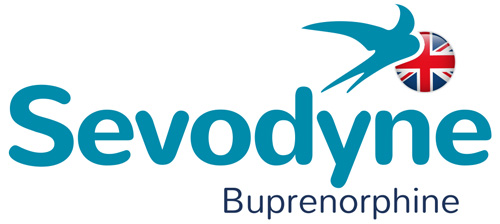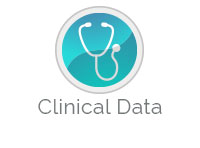Sevodyne (buprenorphine) Transdermal Patches Prescribing Information
(please refer to the full SmPC before prescribing)
Indications: For treatment of non-malignant pain of moderate intensity when opioid necessary for obtaining adequate analgesia, in adults. Available Strengths: Transdermal patches 5µg/hr, 10µg/hr, 15 µg/hr and 20µg/hr over a 7-day period, 4 patches per pack. Dosage and method of use: Prior to starting treatment with opioids, a strategy should be put in place with patients for ending treatment in order to minimise the risk of addiction and drug withdrawal syndrome. Administer every 7th day. Use lowest dose (5µg/hr) as initial dose with consideration given to opioid history and medical status of patient. During initiation of treatment, short-acting supplemental analgesics may be required. During titration process, dose may be adjusted every 3-days (72 hours). Thereafter, 7-day dosing interval should be maintained. Subsequent dose increases may be titrated based on need for supplemental pain relief and patient’s analgesic response to patch. To increase dose, replace with larger patch or combination of patches applied in different places to achieve desired dose. Recommended that no more than 2 patches be applied at same time, to maximum total dose of 40µg/hr. Do not apply new patch to same skin site within 3-4 weeks. Monitor regularly to assess optimum dose and duration of treatment. Possibility of hyperalgesia, tolerance, and progression of underlying disease should be considered if inadequate pain control. Consider Sevodyne dose reduction, discontinuation or treatment review.. If long-term pain treatment necessary, careful and regular monitoring required. Buprenorphine concentrations decrease gradually after patch removal. Subsequent opioid should not be administered within 24 hours after patch removal. Sevodyne can be used as an alternative to other opioids. No dose adjustment necessary in renal impairment or the elderly. Monitor patients with hepatic insufficiency; if severe hepatic impairment, consider alternate therapy. Apply to non-irritated, intact skin of upper outer arm, upper chest, upper back or side of chest. Patch must not be divided or cut in, to pieces. Contraindications: In patients: with known hypersensitivity to buprenorphine or excipients; who are opioid dependent and for narcotic withdrawal treatment; have conditions in which respiratory centre and function are severely impaired or may become so; receiving MAO inhibitors or have taken them within the last two weeks; suffering from myasthenia gravis or delirium tremens. Special warnings and precautions for use: Caution in patients with respiratory depression, CNS depressants co-administration, serotonergic agents, psychological dependence, abuse profile and history of substance abuse, acute alcohol intoxication, sleep apnoea, head injury, shock, reduced level of consciousness of uncertain origin, intracranial lesions or increased intracranial pressure, severe hepatic impairment, constipation Significant respiratory depression associated with buprenorphine, particularly by intravenous route. Overdose deaths have occurred when addicts intravenously abused buprenorphine, usually with concomitant benzodiazepines. Caution when prescribing Sevodyne to patients with or suspected drug or alcohol abuse or serious mental illness. In those physically dependent on full µ-opioid agonists, buprenorphine may precipitate an abstinence syndrome. Opioids can cause sleep-related breathing disorders including central sleep apnoea (CSA) and sleep-related hypoxemia. In patients who present with CSA, consider decreasing the total opioid dosage. Increased absorption of buprenorphine may occur if patches exposed to external heat sources. Fever in febrile patients may result in increased absorption and thereby increased risk of opioid reactions. Concomitant use of buprenorphine and other serotonergic agents may result in the potentially fatal serotonin syndrome – symptoms include mental-status changes, autonomic instability, neuromuscular abnormalities and/or gastrointestinal symptoms. Carefully monitor patients on concomitant serotonergic agents, especially during treatment initiation and dose increases. If serotonin syndrome suspected, consider dose reduction or discontinuation of therapy depending on symptom severity. For all patients, prolonged use may lead to drug dependence (addiction), even at therapeutic doses. Incomplete tolerance developed for some side effects e.g. opioid induced constipation. Risks increased if current or past history of substance misuse disorder (including alcohol misuse) or mental health disorder.
Consider additional support and monitoring if at risk of opioid misuse. Explain risks of developing tolerance. Overuse or misuse may result in overdose and/or death. Closely monitor for signs of misuse, abuse or addiction. Regularly review clinical need for analgesia. Sevodyne may cause positive reaction to sports doping control tests. Drug withdrawal syndrome may occur upon abrupt cessation. If withdrawal occurs, is generally mild, begins after 2 days, may last up to 2 weeks. Gradually taper the dose to minimise symptoms of withdrawal when therapy is no longer required. Tapering of a high dose may take weeks to months. Opioid withdrawal can manifest as: restlessness, lacrimation, rhinorrhoea, yawning, perspiration, chills, myalgia, mydriasis and palpitations. Other possible symptoms include irritability, agitation, anxiety, hyperkinesia, tremor, weakness, insomnia, anorexia, abdominal cramps, nausea, vomiting, diarrhoea, increased blood pressure, increased respiratory rate or heart rate. Consider hyperalgesia if the patient on long-term opioid therapy presents with increased pain – may resolve with opioid dose reduction. Application site reaction usually mild or moderate skin inflammation (irritant contact dermatitis) – may include erythema, oedema, pruritus, rash, vesicles, burning sensation. Monitor application sites for reaction. Diagnostic procedure should be performed if allergic contact dermatitis suspected to determine if sensitisation has occurred and its cause. In patients taking CYP3A4 inhibitors, titrate dose carefully as reduced dosage might be sufficient. Not recommended for analgesia in immediate post-operative period or in situations characterised by narrow therapeutic index or rapidly varying analgesic requirement. Opioids may cause an increase in serum prolactin and decreases in plasma cortisol and testosterone with possible clinical symptoms. Use cautiously with other central nervous system depressants, benzodiazepines and serotonergic medicinal products due to increased risk of serotonin syndrome. The concomitant use of opioids with sedative medicines such as benzodiazepines or related drugs increases the risk of sedation, respiratory depression, coma and death because of additive CNS depressant effects. Only concomitantly prescribe sedative medicines if no other treatment options possible. The dose and duration of concomitant use should be limited. Inform patients of signs and symptoms of respiratory depression and sedation and monitor closely. Pregnancy and Breastfeeding: Not recommended during breastfeeding. Do not use during pregnancy or in women of childbearing potential not using effective contraception unless benefit justifies potential risk to foetus. If prolonged opioid use required in pregnancy, advise of risk of neonatal opioid withdrawal syndrome – ensure treatment available. Use during labour may depress neonate respiration – ensure antidote for child available. Driving: Patients should be warned about effect on driving and, if experiencing dizziness, drowsiness or blurred vision, they should not drive or use machines for at least 24 hours after patch removed Side effects: For the full list of side effects consult SmPC. ‘Very Common’ ‘Common’ and ‘Serious’ side effects are included in prescribing information. Very common (≥1/10) side effects: headache, dizziness, somnolence, constipation, nausea, vomiting, pruritus, erythema, application site reaction. Common (≥1/100 to <1/10) side effects: anorexia, confusion, depression, insomnia, nervousness, anxiety, tremor, dyspnoea, abdominal pain, diarrhoea, dyspepsia, dry mouth, rash, sweating, exanthema, muscular weakness, arthralgia, tiredness, asthenic conditions, peripheral oedema. Uncommon Serious (≥1/1000 to <1/100) side effects: hypersensitivity, tachycardia, circulatory collapse, drug withdrawal syndrome. Rare/very rare Serious (<1/10000 to <1/1000) side effects: anaphylactic reaction, psychotic disorder, angina pectoris, respiratory depression, respiratory failure, drug dependence. Unknown frequency Serious side effects: anaphylactoid reaction, seizures, neonatal drug withdrawal syndrome. MA number: PL 35533/0059-0061 (5µg/hr,10µg/hr, 20µg/hr). PL 35533/0135 (15 µg/hr). Cost: £5.53 for 5µg/hr patch x4 pack; £9.93 for 10µg/hr patch x4 pack; £15.48 for 15 µg/hr patch x4 pack and £18.09 for 20µg/hr patch x4 pack. MAH: Aspire Pharma Ltd, Unit 4, Rotherbrook Court, Bedford Road, Petersfield, Hampshire GU32 3QG. Legal category: POM. Date last reviewed: December 2023. Version number: 1010311145 v 14.0.












